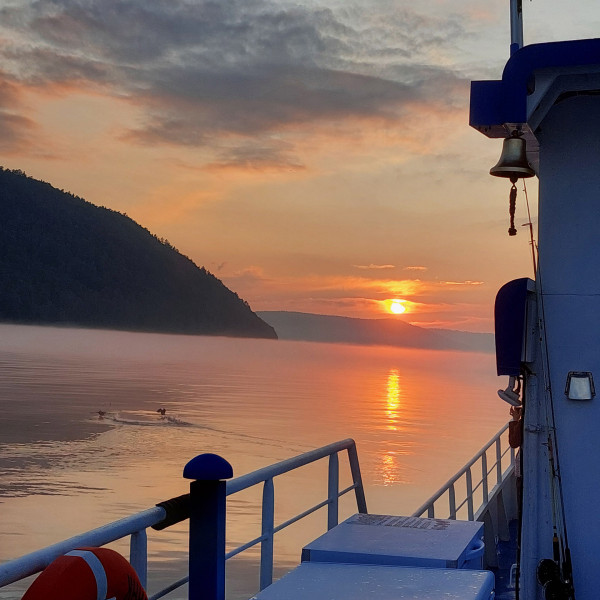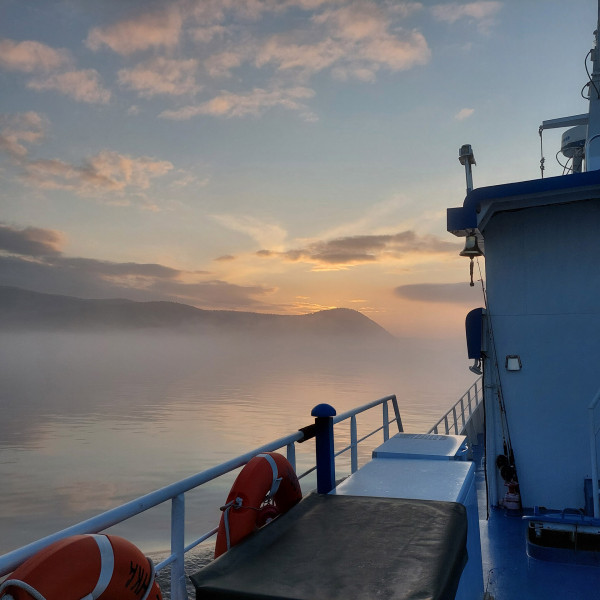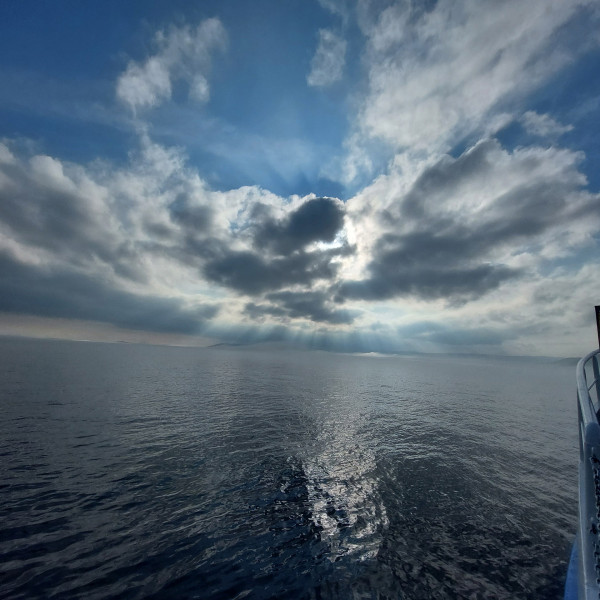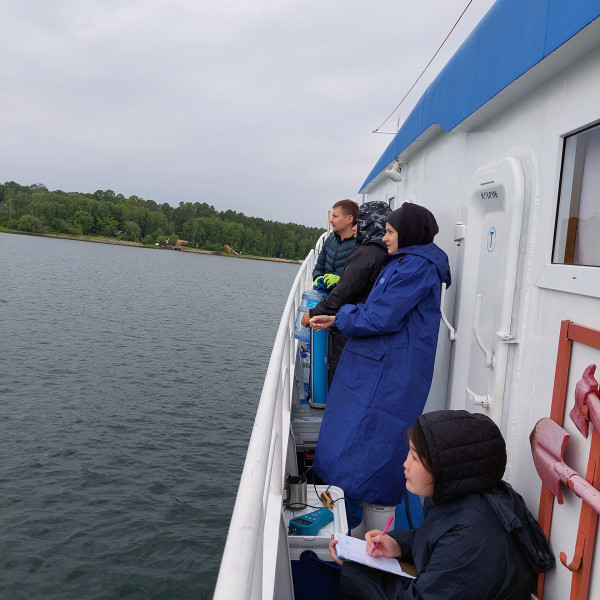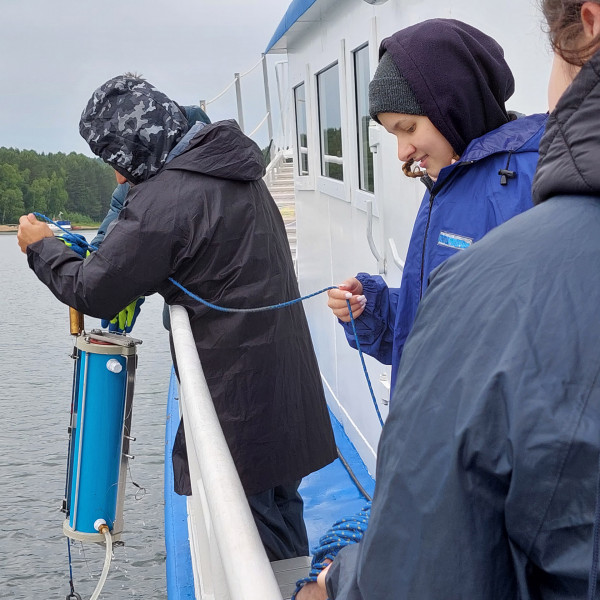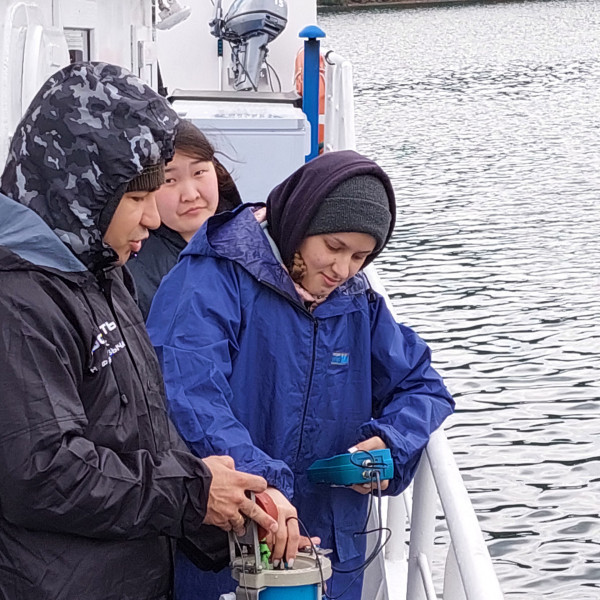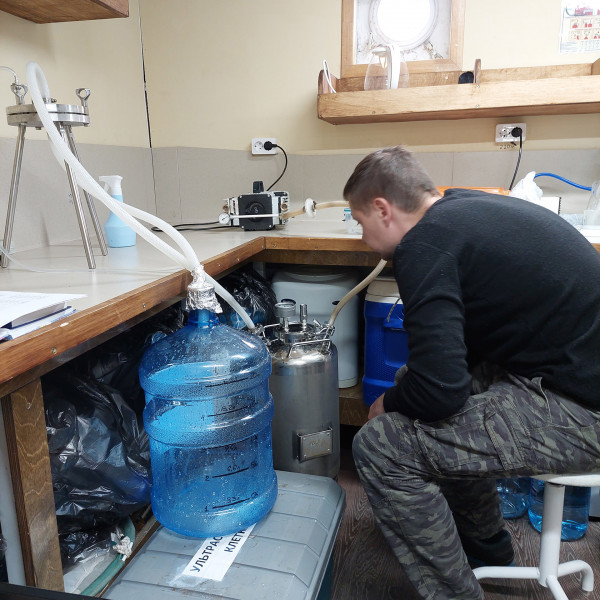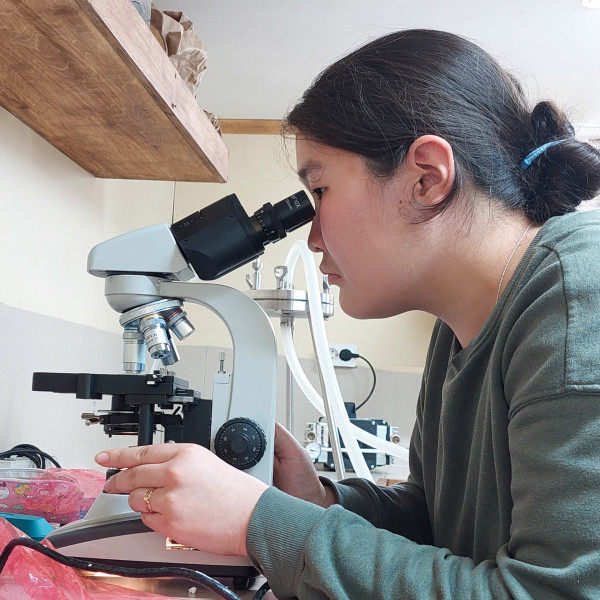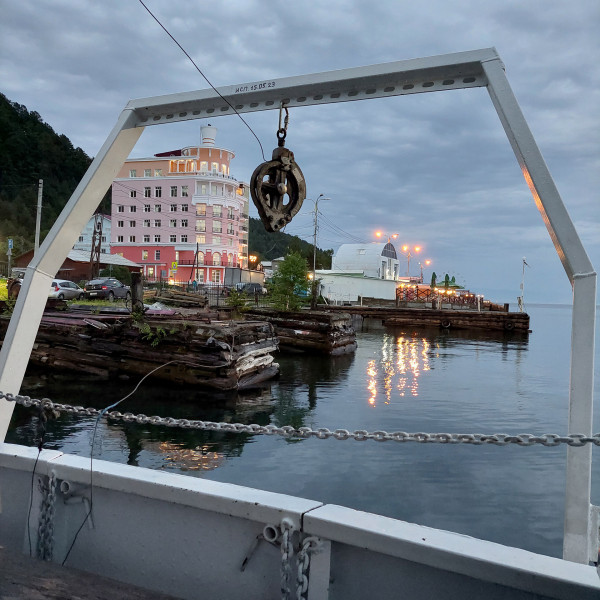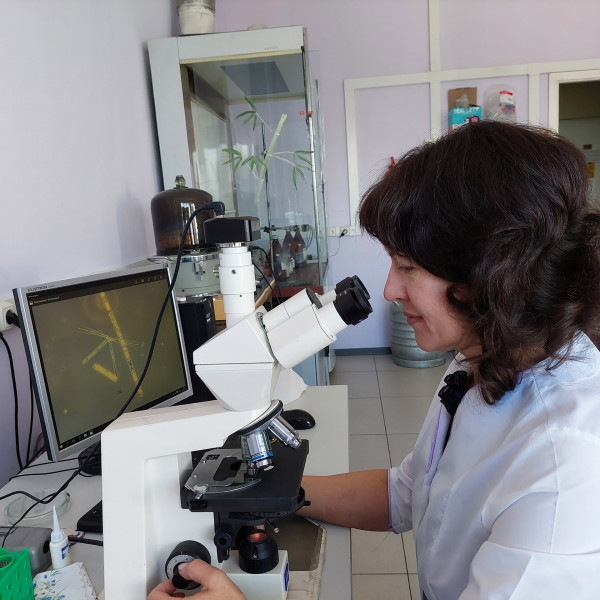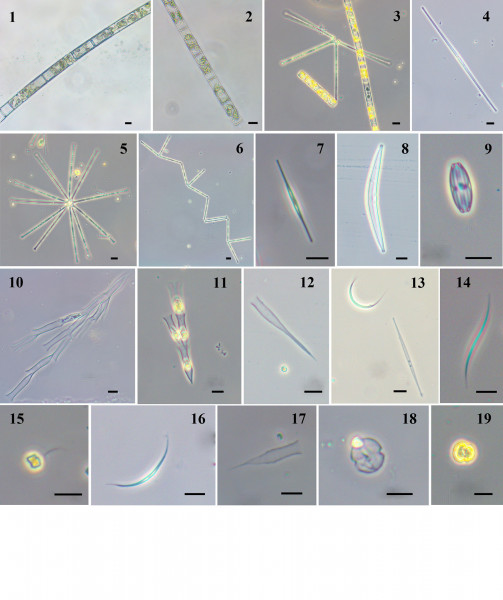Expedition on the board R/V “Papanin” on June 22-26, 2023
Within the project of Russian Science Foundation № 23-14-00028 “Communities of microeukaryotes in the reservoirs of the Angara cascade” (led by Ye. V. Likhoshway), a research expedition was held on June 22-26, 2023 on board the R/V “Papanin” to compare the diversity of microeukaryotes in Southern Baikal (SB) and Irkutsk Dam (ID). Water samples were taken from the photic layer (up to 25 m in SB and up to 5 or 10 m in ID) with a Niskin-bottle sampling at 9 stations in SB (12 km from Kultuk, 3 km from Marituy, Marituy-Solzan, 3 km from Solzan, Tolsty-Snezhnaya, 3 km from Listvyanka, Listvyanka-Tankhoi, 3 km from Tankhoi, Kadilny-Mishikha) and at 8 stations in ID including bays (Kurminsky, Elovy, Ershovsky). Water transparency was determined with a Secchi disk. After determining the temperature, pH, and redox potential (ORP) of the water, samples were collected on filters for further study by scanning electron microscopy (SEM), quantitative analysis of phytoplankton composition by light microscopy (LM), and DNA extraction for sequencing to determine the taxonomic composition of microeukaryotes and by a Juday net for culturing microalgae species.
As a result of the expedition, it was found that at the time of sampling of SB and ID differed significantly in both habitat parameters and composition of microalgae in the photic layer of water. Water in SB was more transparent (10-22 m) and colder (3.6-5.0 °С) than in ID (3-5 m and up to 12.7 °С), the surface water temperature increased from 6.0 to 11.7-12.1 °С in the central part downstream the Angara River from the source to the dam. The pH values of surface water in SB were 7.0-8.0 and from 8.0 to 8.7in ID.
Preliminary analysis of sampling with SM revealed differences in both abundance and species composition of phytoplankton in SB and ID. Phytoplankton of SB was mainly represented by diatoms, chrysophytes and green microalgae. The diatom Aulacoseira baicalensis (K. Meyer) (Wisłouch) Simonsen, Fragilaria radians (Kützing) D.M.Williams & Round / Ulnaria acus (Kützing) Aboal and chrysophyte Dinobryon cylindricum O.E. Imhof dominated. Green algae of the genus Monoraphidium, also played a significant role in phytoplankton, and Ankistrodesmus arcuatus Korshikov (M. griffithii (Berkeley) Komárková-Legnerov) and M. griffithii (Berkeley) Komárková-Legnerov were observed to develop significantly. A. islandica (O. Müller) was also found in small numbers among diatoms.
There were noted a higher number of cells and a greater diversity of species in ID than in Southern Baikal that might be caused by higher water temperatures.Diatoms Asterionella formosa Hassall, A. islandica dominated, their development in SB was not so marked and Nitzschia graciliformis Lange-Bertalot & Simonsen, and chrysophytes of the genus Dinobryon, among which the most common was Dinobryon divergens O.E. Imhof.
Diatom Stephanodiscus meyeri Genkal & Popovskaya and the haptophyte Chrysochromulina parva Lackey were also subdominant, while other species were also present: green Ankistrodesmus arcuatus, Monoraphidium contortum and M. griffithii, small cell centric diatoms, cryptophyte Rhodomonas pusilla (H. Bachm.) Javorn, dinophyte Glenodinium sp. Phytoplankton of the ID bays in general was similar to phytoplankton of the central part of the dam, but it was even more abundant and diverse. Thus, Asterionella formosa, N. graciliformis, A. islandica and D. divergens dominated in Kurminsky Bay. There was also an increased content of benthic species.
In general, it may be noted that phytoplankton in Southern Baikal was not so abundant as in Irkutsk Dam and its bays. The data are preliminary, the samples will be tested using SM and SEM, DNA will be isolated from them, its high-throughput sequencing and bioinformatic analysis of the obtained sequences will be performed to determine the taxonomic diversity of microeukaryotes.
The participants of the RSF project (Ye.V. Likhoshway, A.M. Marchenkov, I.S. Mikhailov, D.V. Khinkhalova, M.A. Nalimova) took part in the expedition; microscopic analysis was performed by A.D. Firsova.
The expedition participants thank the crew of the board R/V “Papanin” for their precise and well-coordinated work.




